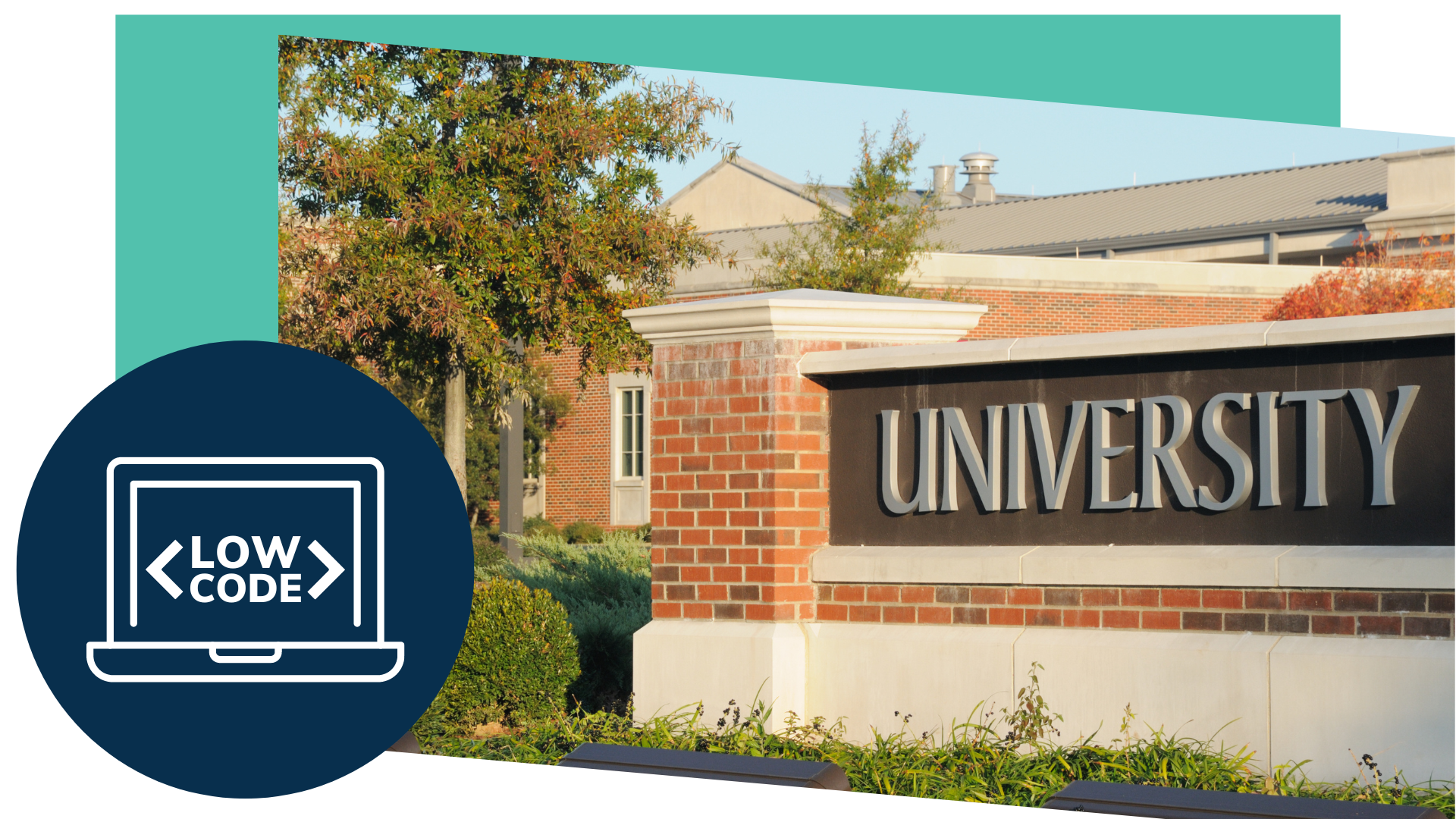
COVID-19 accelerated the transition to remote learning at a pace that is impacting the quality of education at higher education institutions.
Poor student experiences can lead to enrollment decline and add to the financial burden already facing these institutions. A growing number of institutions are turning to low-code platforms like BP Logix to accelerate their transition to remote learning.
In this blog, we introduce low-code platforms and discuss some of the benefits of adopting this innovative technology in higher education institutions.
What is a low-code platform?
A low-code development platform is a software development approach that uses a graphical user interface in place of native coding.
Low-code empowers non-programmers to create applications in a visual, drag-and-drop environment while leveraging reusable components' full power. The speed of low-code development is dramatically faster (5 to 10X), while still delivering the same results as hard-coded applications. A low-code platform can also help reduce risks related to data privacy and information security.
At a time when software developers are hard to find or expensive to afford, this technology has the potential to keep the pace of digital transformation. In addition to an intuitive front end, a low-code platform comes with pre-built templates and out-of-the-box integration capabilities. Research by Gartner estimates that 65% of all applications will be delivered through low-code platforms by 2024.
Let's dive into five reasons why your institution should use low-code platforms in their software development lifecycle.
1. Cuts the cost of development
Universities and colleges have tight budgets, but they need to make critical investments to stay competitive at a time when they are competing for a shrinking pool of students. The traditional options can be both resource intensive and time consuming.
Many schools have an aging portfolio of core enterprise applications like Student Information Systems, Learning Management Systems, HR/ Payroll Systems and an ERP for Finance.
To stay competitive and introduce new programs, they need to make changes to these systems which can be challenging due to high cost and lack of availability of software developers proficient in their respective platforms.
Building custom applications from scratch and buying off the shelf SaaS solutions can be equally expensive and resource intensive. Meanwhile, a low-code platform can plug into the ERP at the back end and provide a much more intuitive front end to make the required enhancements. No coding required equals dramatically lower delivery costs.
Coupled with low maintenance and easy integration with third-party applications, low-code platforms offer modern and futuristic solutions for institutions to significantly reallocate their IT budgets.
2. Speedier delivery
Hard-coded applications lack the component reusability capabilities of low-code platforms. It can take months or sometimes years to code, test, and deploy applications using the high code development lifecycle process. On the other hand, a university IT team can deliver a flawless app or site within weeks using state-of-the-art AI-powered low-code platforms like BP Logix.
Wondering how these platforms achieve such a quick turnaround? Low-code platforms have pre-coded templates, reusable components, and click-and-drag capabilities that shorten the time that would otherwise be used to write code. Essentially, you need only to customize the templates and features, and the platform automatically generates the code for you.
3. Improved experiences for students, faculty, and staff
Most schools have built their workflow automation gradually over time using a range of options including buying off the shelf and building bespoke. As needs have changed, these applications have been fixed with patches. The typical student or faculty members touches multiple applications in the process of going through their academic and campus life. The result is a fragmented discontinuous experience in many cases requiring data reentry and logging in and out of multiple systems. This fragmented experience can result in lost productivity, data integrity issues, and an overall poor end user experience.
A low-code platform functions as the glue that seamlessly connects across different systems in the background while providing a simple unified front end to end users.
Higher ed low-code in action
Working with BP Logix, an Ivy League university implemented a first-time remote system to let 6,000 students update course and grading preferences without being on campus. Professors can efficiently meet and teach students virtually via a remote learning system developed using low-code platforms. Moreover, students can automatically get notifications from a remote e-learning system for what previously required an in-person presence on campus.
4. Better data and insights
Staff and faculty at higher education institutions use data to make decisions. If the application portfolio at the institution consists of a large spaghetti of disparate systems, data can get fragmented and unreliable.
Accessing actionable information can become a challenge. A robust low-code platform will capture key data and allow you to slice and dice to provide actionable insights.
BP Logix has advanced AI and ML capabilities which allow the platform to capture in process data and provide advanced predictive analytics. For example, you may be able to predict that a key process (enrollment, payroll, grants application, etc) is likely to get delayed, which can trigger an automatic email escalation to the appropriate user.
5. Reduced complexity
Traditionally, there is a tradeoff between speed and complexity. Meaning, you can get a software platform that can help you build applications quickly, but is unable to handle complexity.
With a low-code platform like BP Logix's Process Director, you get the best of both worlds. The right platform has an in-house team that understands your domain and creates pre-built components tailored to address even your most complex use cases.
Higher ed low code in action
 University of Central Florida (UCF) is responsible for over 3000 international students from over 130 universities across the world. UCF Global was seeking to double their enrollment over a three-year period while enhancing the onboarding experience for its students.
University of Central Florida (UCF) is responsible for over 3000 international students from over 130 universities across the world. UCF Global was seeking to double their enrollment over a three-year period while enhancing the onboarding experience for its students.
UCF chose BP Logix low-code platform to automate complex processes across immigration, employment authorization, visas, and international taxation.
Read the full UCF Global case study.
Explore low-code in higher education
The number of higher education institutions seeking to use low-code platforms continues to grow. However, not all low-code platforms are tailored to the higher education sector and come built in with relevant templates.
Pursuing low-code means you get to become part of a community of collaborative higher ed colleagues that are committed to embracing the next generation of digital transformation in higher education.
Schedule a demo today to learn how BP Logix can help your higher education institution be responsive to the changing needs of the next generation of students and faculty.


